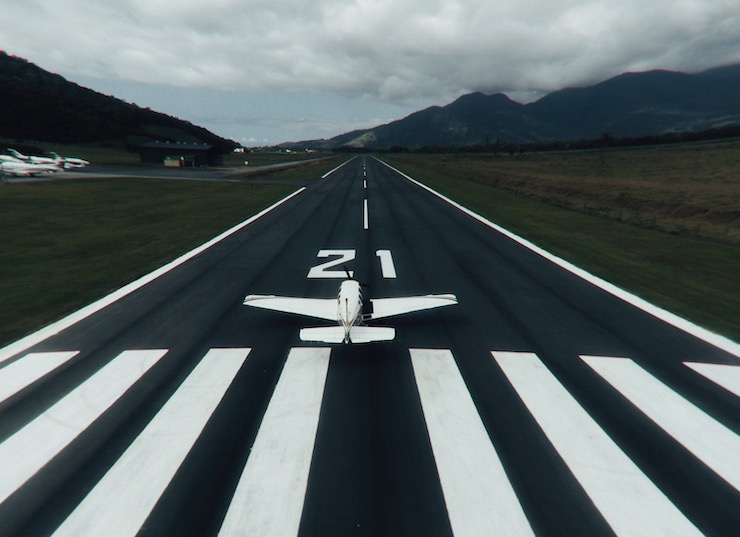
On January 15, 2009, Captain Chesley “Sully” Sullenberger became a household name and an American hero. Shortly after taking off from New York’s La Guardia Airport, US Airways Flight 1549 stuck a flock of Canada geese resulting in a total loss of engine power. Sully, a former Air Force pilot, and his co-captain Jeffrey Skiles successfully landed the plane in the middle of the Hudson River. News crews captured every second of the controlled aircraft landing. From the landing in the water to the all 155 passengers sliding down the inflatable emergency ramps, and being rescued by emergency boats. Being dubbed “The Miracle on the Hudson”, the incident brought to public light the dangers that wildlife pose to aircraft.
If a flock of geese could render an Airbus A320 powerless, what would be the implications of an accident with a smaller aircraft, or any aircraft encountering wildlife on a runway? Imagine how much damage deer cause in roadway accidents, if one were to run out on a runway during takeoff it could be catastrophic. Airport managers have always had to have teams monitoring for animals along the runway, but since Flight 1549, many have stepped up the tools used to keep animals out of the area. Typically fences are put up or motion sensor alarms are placed about. Crews also go out with trucks or dogs to try and scare away animals. Even still, wildlife has become so accustomed to human habitats that these measures do not always work. Animals breach fences or get used to the sound of alarms. They also get used to being scared off by vehicles or dogs, in the case of birds sometimes just landing a little further away, but still not in a safe location.
For major airports, there can be entire teams dedicated to maintaining animal management. For smaller airports that have smaller staffs, this can put a large strain on airport operations. These airports also tend to have a greater wildlife problem as they are often in less crowded areas, surrounded by fields, places where animals feel more comfortable venturing about. That is why Bult Field outside of Monee, Illinois has begun using drones as part of their animal management protocols. Designated as a C56 airport, one that caters to small aircraft, Bult Field is a part of the Illinois Department of Transportation, Division of Aeronautics. They contracted Hanson Professional Services to coordinate a drone program to keep its runway clear of animals like birds, deer, coyote, and foxes. Headquartered in Springfield, IL, Hanson has been engineering and planning management services for a wide range of industries since 1954.
As William Viste, project coordinator from Illinois Aeronautics Division, stated, “We are always looking for ways to improve safety, enhance operational efficiency and improve the pilot experience at Bult Field and other airports. UAS (unmanned aircraft systems), or drones, can limit the need for staff to traverse certain terrain and hard-to-reach areas. Airports can reach over several hundred acres, so drones provide a unique and cost-effective way to assess areas of this size. In addition, specialized sensors, such as thermal imaging, can produce information that is not as easily gathered from the ground.” Through Hanson’s planning Bult Field has been deploying drones on a weekly or as need be basis to scare off animals and more.
Without having to continuously divert manpower to chase off animals, an FAA certified drone pilot can simply fly a drone over to where an animal is to scare it off. As animals have not yet become accustomed to the sound and movement of a drone, it successfully scares them away. If an animal does return or settle further down the runway, the drone can be used to follow after it, ensuring that it moves off to a safe distance. But using drones just to drive away an animal only solves part of the problem for wildlife management at an airport. It is just as important to deter animals from entering the space.
Drones are being used to gather data on wildlife movement and nesting grounds in the areas surrounding Bult Field as well. With high definition and infrared cameras, the drones can search out animal tracks and nests to give airport managers an idea of the wildlife trends around the airport. The data is then analyzed by Rodger H. Anderson, an environmental specialist with Hanson. “This information is put into a GIS database so that we can start to see patterns and predict from year to year what can be expected,” he said. These predictions give management teams a way to plan fencing or relocation missions.
Between being able to keep animals clear of runways and predict their movements, Anderson sees drones as becoming one of the most valuable tools an airport management team can have. At the same time, there has been a lot of concern around drones interacting dangerously with aircraft. The FAA has designated all airports as no fly zones for drones. Still, Anderson who has been with Hanson for more than 20 years, knows they can be used safely in airport environments in the right hands. With clearance and strict guidelines, drones can easily lead to an effective animal management program.
|